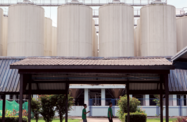Officials in Myanmar are encouraging proposals for new mining developments following a series of new reforms aimed at incentivising investment in the segment.

On July 26 the Department of Mines at the Ministry of Natural Resources and Environmental Conservation (MNREC) began accepting applications from local and international companies to undertake projects in the country.
The stage for this was set by the February promulgation of Notification No. 13/2018 (the Mine Rules), which implements the provisions laid out under the delayed 2015 Mines Law.
The new rules seek to clarify the permit application process for mining activity, laying out 10 different types of permits and the requirements for each of them.
The royalties applied to each mineral have also been set out, alongside the terms for joint ventures between local and foreign operators, and the criteria for determining the location of blocks for exploration and extraction.
One significant update is to the term limit of large-scale operation leases, which was increased from 15 years to 50, allowing a company to maximise returns on investment and enjoy security of tenure. Medium-scale mines can produce for up to 15 years.
Another security measure granted to investors is the provision for exploration permit holders to have a guaranteed path to production permit approval if preliminary prospecting and exploration activities are successful.
Furthermore, while large-scale operations receive approval and oversight from the national government, the new Mine Rules grant more responsibility to local and regional governments for permitting small and medium-sized projects.
The legislation has sustainability implications as well, calling for increased environmental risk management during a mine’s operational life, including the maintenance of a conservation fund. Firms applying for exploitation rights must submit a detailed programme to the MNREC for the rehabilitation of the mine and its environs after commercial activity has ceased. However, no such plan is necessary for exploration activities.
July sees first licences awarded
There has already been some activity under the new law, with licences granted to Australian firm PanAust in early July, before the MNREC began accepting in-person and online applications later that month.
On July 5 PanAust announced it had received approval from MNREC for three exploration licences in Sagaing Region, in Myanmar’s north-west. The three blocks cover an area of 562 sq km and are thought to hold significant deposits of copper and gold.
The new leases will complement three others in Sagaing Region that span 213 sq km and were awarded to PanAust in 2016, when the firm first entered the country.
PanAust holds an 80% stake in local extraction firm Wuntho Resources, with joint-venture partner Myanmar Energy Resources holding the remainder.
The Department of Mines told local press in mid-July that seven additional companies from countries such as Japan, South Korea, China and Australia are seeking permits to conduct initial surveys of sites across Myanmar.
Myanmar Investment Commission announces faster application reviews
A commitment by the Myanmar Investment Commission (MIC) to streamline its assessment procedures and hold meetings to review investment applications every two weeks rather than monthly should also allow mining companies to set up shop more easily.
According to an MIC statement issued on June 25, applications will be vetted in 30 days, compared 60 previously, with final decisions to be announced no more than 10 days thereafter.
Mining sector central to overall growth projections
Although the impact of new investments will likely not be felt for some years, as most projects are still in the feasibility stage, it is expected that the mining industry will experience a period of growth as it returns to full production.
According to estimates in the FY 2018/19 budget – covering the period between October 1 and September 30 – mining industry GDP is forecast to expand by 7.5%. This represents the seventh-fastest rate of expansion of the 14 sectors covered in the budget projections, and is close to the 7.6% growth forecast for the broader economy.
New investments under the updated regulatory framework and continued efforts to improve the business environment and attract activity from foreign players should lend themselves to further industry expansion in the coming years.
“I think the promulgation and subsequent implementation of the new mining rules has served to make the sector more attractive to foreign investment,” Fred Hess, managing director of PanAust, told OBG. “The MNREC has tried to implement the rules effectively, which is very encouraging to see.”


